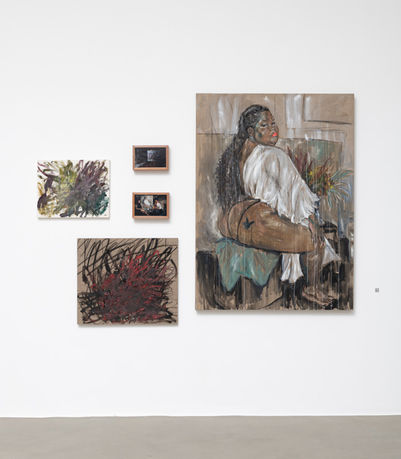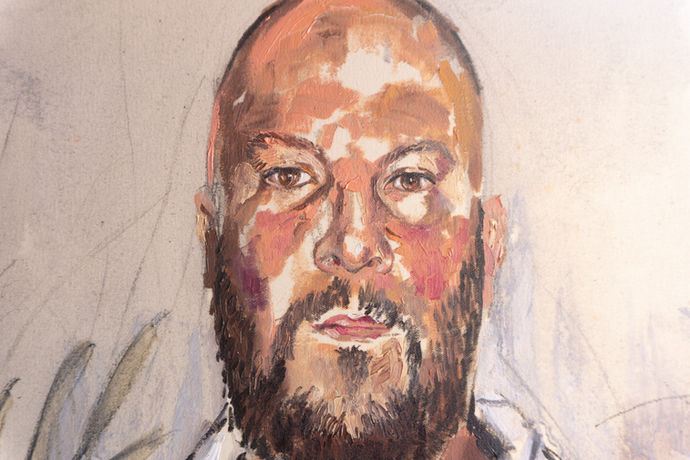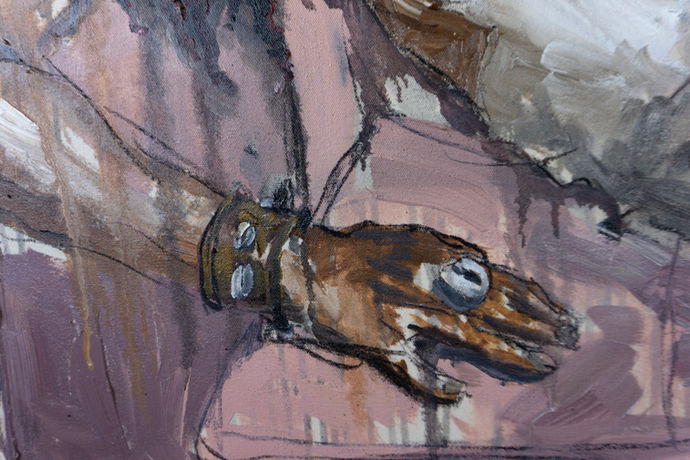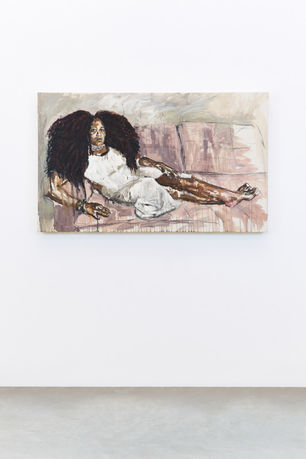Vigil
At nightfall, Panmela Castro’s studio opens to welcome friends and close companions for a vigil in which the painted portrait becomes a memory of the mood shared during the encounter. Panmela transforms the extended hours of the night into a space of creation and listening, offering herself as a tool for constructing the portrayed person’s image for the world. That’s why the portrait is made in person, not so the guest poses all night long, but so they can imagine their image painted alongside Panmela.
The painting becomes a sensitive memory of the event, reflecting the harmony — or lack thereof — between model and artist. The pictorial surface does not aim to fix a static identity but to register atmospheres: conversations, silences, agitation, traces of dancing, fatigue, and whatever else may arise in the moment. The gesture of painting varies according to the lived experience, some canvases are marked by drips, thick layers of paint or restrained strokes, revealing the instability and intensity of the relationships that unfold during those hours.
Because these are nighttime encounters, often accompanied by champagne, social defenses tend to drop, and the paintings become intimate. Gestures appear that would not emerge in formal portraits: vulnerable, free, unstable marks, traces of a shared time that exists outside the productive clock, in a space that feels safe to simply be.
Vigil proposes the portrait not as representation, but as an inscription of lived experience. The process is performative, confessional, and relational, presenting art as a device for care, alterity, and affective politics.

Marisa Monte, 2024
Mc Carol de Niterói, 2021
Bruno and Ismael, 2020
Pablo León de La Barra, 2020
Pâmela Carvalho, 2020




























